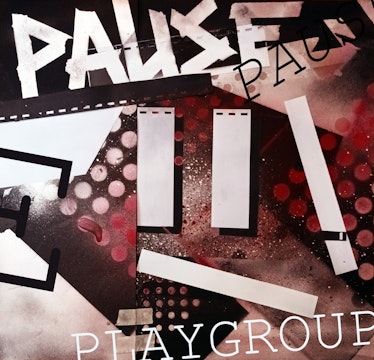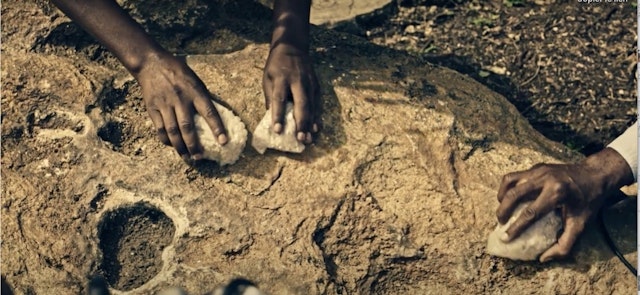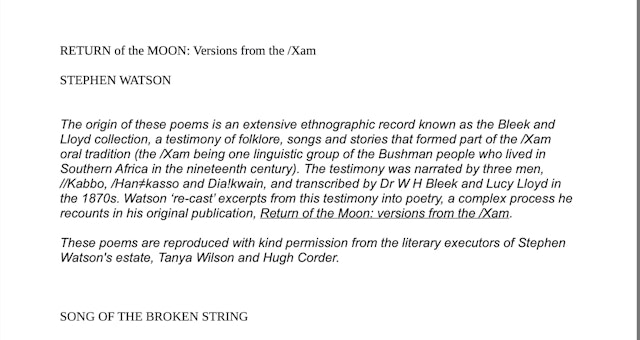Was the Past Silent? Rock Gongs in Johannesburg
Date: Unknown
Date: Unknown
Place: Unknown. Name: Unknown. Uprooted and replanted. The light flows over its surface differently, transformed into something ornamental. It retains its seemingly lost potency as it warms to the morning sun, nestled uncomfortably in a new place, its surface, like an open door, a time machine into a remote historical period.
Sonic Excavations: Layers of Listening in Johannesburg draws a relation between the layers of memory and strata of rock to evoke the past, in recognition of two interrelated features of sonic experience: that aspects of what we hear presently reveals aspects of the past, and that the present impinges on our sonic imagination of the past. We live within a past moulded by the present. “Was the past silent?”, a question asked by archaeomusicologist Joshua Kumbani in a recent interview. Through the lens of the museum – yes. In their book Sensible Objects: Colonialism, Museums, and Material Culture (2006), David Howes and Constance Claasen make two strong arguments. The first is how historical artefacts are made to fit into the museum's largely visual sensory order, and the second is that each culture must be addressed in its own sensory terms.
These traces can be seen on the ironstone rock gong outside the The Origins Centre in Johannesburg. Separated from its primary substance, worn by nature, transported from an unknown location, reoriented, and reconceived as an item for scientific investigation. We can only imagine the sensescape of the gong’s original context; a distinction made between the ‘harmonious’ sound of nature (past) and the cacophonous sound of the city (present), but we can only hypothesise about how this ancient environment was apprehended or if this was in a polysensorial way. Perhaps, to the earliest rock gong players, drawing from Don Idhe, listening was a whole-body experience, similar to bouncing a basketball: I bounce the ball, but I 'hear' the vestiges of its sound through my hands and fingertips when it returns.
Is the past silent? It certainly does not have to be. The rock gong, like Galileo's renowned images of the moon's surface, has the visible remnants of repeated bombardment, but unlike the moon, it is scarred by ancient repetitive beating. In other words, the percussive surface marks on the rock gong provide a clue. Playing the rock gong is like communing with the cosmogony of an imagined community, with whom we share a celestial tempo, superimposed on top of the universe's primordial hum. It evokes social time where our bodily metronome meets with the rhythm of another, human or non-human, past or present. To play the rock gong is to walk in step with the past. In a recent discussion with palaeolithic archaeologist Sarah Wurz, this phenomenon of entrainment, when one rhythm is absorbed into another, was examined in greater depth. To sum up, Alexander Stein eloquently answers if the past was or is silent: “All that we have ever heard is in us; we are all that we have ever heard.”







